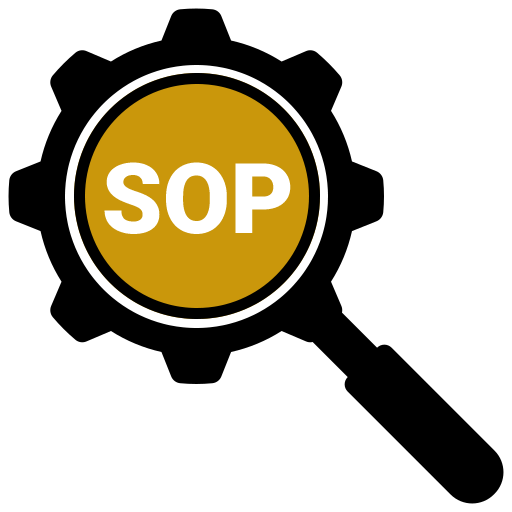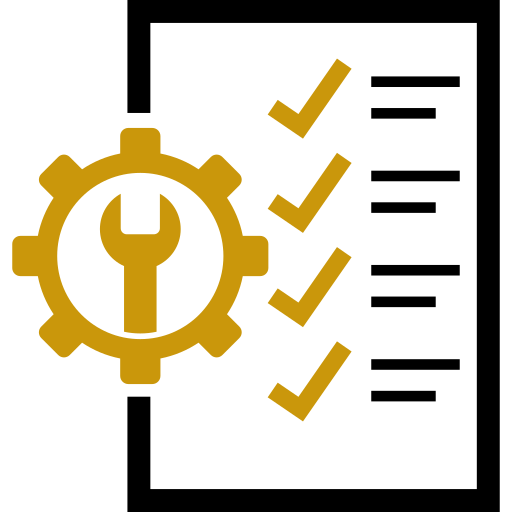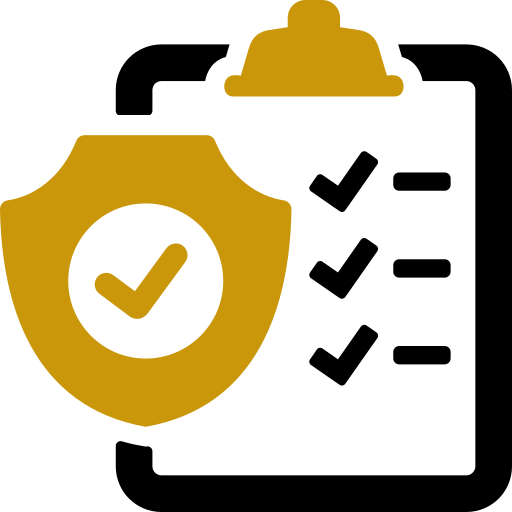- Home
- About Us
-
Services
-

Initial Public Offering advisory services
-

Standard Operating Procedures
-

Organisational Policies
-

Implementation of complex financial processes
-

Accounting support services
-

Implementation of Internal control over financial report (ICFR)
-

Technology and system audit
-

Accounting GAAP conversions (IGAAP to Ind AS/IFRS)
-

Physical verification of assets
-

Virtual CFO services
-
- Insights
- Talk to an expert
- Contact Us


Standard Operating Procedures
An effective guide to streamline processes- A standard operating procedure provides documented set of instructions which are to be followed to brings about uniformity of performance and carrying out activities in appropriate turnaround time.
- Logical implementation of well defined SOP makes the organisation "system driven" and "not people dependent". Which means better clarity by the way organisations and their various departments function and also helps to identify and bridge the gaps between various internal processes.
- SOPs are not implemented to eliminate people
from the
system but to give appropriate direction to people to ensure that their efforts are used
in
constructive manner. So that process guide the organisational people and chances of
people creating
systems or working beyond quality systems framework is avoided.
The “let me do it my way” approach might work as magic in the short term but the implementation of SOPs cannot be overlooked for long-term success.
Documenting these SOPs can feel like a herculean task, especially for small companies or companies with busy entrepreneurs. However, once these processes are put in place the business starts to get the benefits by way of better efficiency, reduced errors, constant quality, and more reliable operations.
By investing time in creating SOPs now, the businesses can lay the foundation for sustained growth and stability in the future.
Which businesses should have Standard Operating Procedures
Not every organization will require SOPs, and it depends on the business owner or manager, to determine if there are work processes that can be duplicated every day/everytime within the Company and if it's worth standardising those processes through SOPs.
In the nutshell - if the business process involves routine activites the business requires SOPs.
5 signs that the business requires Standard Operating Procedures
 Repetitive processes
Repetitive processes
If the business involves repetitive processes, implementing systems can enhance efficiency and free up time of senior officials to focus on more important aspects of the business.
 Employee turnover
Employee turnover
When people leave, the acquired knowledge and expertise of number of years is generally difficult to pass to the new joinees. By implementing SOPs, the organisation ensures that well documented processes are referred by to new employees, which generally reduce the training time and also the impact of employee turnover.
 Business is experiencing rapid growth
Business is experiencing rapid growth
If the business is in a rapid growth stage, it is pertinent to standadise the procedures by implementing SOPs. The SOP shall maintain consistency across different departments which is vital when the business expand and workloads increases. Implementing systems ensure that the effort of people are directed towards organisational objectives.
 Enchanced inefficiencies and error
percentage
Enchanced inefficiencies and error
percentage
If things are falling through the cracks, tasks are taking longer time than desired, it’s time to put appropriate system in place. By creating standard procedures you can eliminate inefficiencies, reduce errors and ensure everything runs smoothly.
 Business is experiencing increased
complexities
Business is experiencing increased
complexities
If your business has become more complex its the right time to "simplify complexities". Implementing standard procedure will be worth the time and effort.


Frequently asked questions
1. As a business owner am I required to get SOP documented for all the finance processes?
No, you may choose the processes which are critical to your business. In case, revenue and payroll processing represents significant portion of the business activities and the transactions are routine in nature, as a business owner you must put in place a well documented SOPs for the relevant processes.
2. Does getting the SOP prepared itself would mean that process and related controls are operating (working) effectively?
No, the task of implementation is different than the task of preparation of SOPs. Once the SOP is documented a copy is shared with the employees or is uploaded on intranet (on inhouse document access portal).
The clear directions shall be given to the employees to carry out the transactions of the specific process in accordance with instructions mentioned in the Standard Opearting Procedures. On quarterly basis, sample of transactions are picked up to test if the transactions are carried out as indicated in the standard opearting procedure. The exceptions if any are highlighed and corrective actions are taken. Once the process is effectively implemented, you would find that the exceptions reported are reduced to acceptable level. However, the process of updating the SOP (basis any changes adopted/suggested in the process) and testing of the transactions should be carried out a regular intervals.
3. Does preparation of SOP would require a lot of time of the team or would it result into hiddrance in Company's existing work.
No, it will involve minimal time of the team.
4. The SOP implementation would change the way my team has been working, that calls for great deal of training which needs to be provided to the team.
Your existing team needs guidance w.r.t certain processes. Once a clear cut guidelines are made available to them they are more likely to follow the same, SOP serves that purpose well. In most cases, the implementing of the processes shall not require training to the employees.

 Revenue or sales process
Revenue or sales process
The value of sale of all goods and services recognized by a Company in a period is referred as Revenue. Accordingly, the process of recognising revenue and collecting money is extremely critical for any business. The accounting SOP manual helps to streamline and optimize the process related to
-
a) Signing of agreement/ receiving purchase order from the customer/buyer/client. -
b) Process of receiving approval for raising of invoice and validating that the invoice is raised in accordance with the terms of agreement with the vendor. -
c) Track collection cycle time and followup process with the customers making delayed payments. -
d) Procedure for handling payment delays or defaulters -
e) Reviewing the ageing of trade receivables (debtors)

 Purchase to payment process
Purchase to payment process
Procure-to-Pay (P2P process) is an integration of purchasing and payment systems through a coordinated and step-based approach. It is essential in managing the accounts payable.
-
a) . P2P process eliminate needless efforts, to ensure more effective use of available resources, which involves savings. -
b) Purchasing processes become simpler and more streamlined as they start to follow a set of requests and approvals. -
c) Each step is well-defined and easy to follow. This means companies have more control over the situation as a whole, allowing them to intervene more strategically as needed. -
d) Management gains visibility into the entire purchasing process, allowing them to make improvements and eliminate bottlenecks. -
e) With all this, the relationship with suppliers becomes strengthened, as procurement and payment become more agile.
P2P covers the entire process chain, right from procurement, purchase, and invoice processing to the final vendor payments.

 Payroll process
Payroll process
SOP serves as a repository encompassing all the steps required to run an end-to-end payroll operations, offering a one-stop reference for all aspects of the payroll process.
-
a) Having documented guidelines would enable the payroll team to follow a similar process when processing a pay run. This will also help to provide a sense of direction. -
b) A well defined SOP would assist the payroll team to operate within minimal impact from changes within the team, such as employee turnover, absence of team members or even managing the administrative complexities that come with having offices in various locations. -
c) The SOP shall provide an overall view of what an ideal end to end payroll process should be, it highlights any potential gaps and provide opportunities for improvement on the current processes.

 Property, plant and equipment management
process (Fixed
assets management process)
Property, plant and equipment management
process (Fixed
assets management process)
In most organisations, fixed assets are a fundamental part of your operations. From buildings and machinery to Computers and office equipment, the management of these assets is critical to the overall organisational objectives
-
a) Understanding fixed asset management involves managing and maximizing value from these assets used in operations to generate income, covering activities from acquisition to disposal, and focusing on mitigating loss and enhancing efficiency. -
b) Core elements of fixed asset management include fixed inventory tracking for operational efficiency, depreciation calculation for financial health, maintenance logs for optimizing asset performance, and asset disposal management. -
c) Common mistakes when tracking fixed assets include not maintaining separate records for owned versus leased assets, inaccuracies in tracking depreciation, errors in financial statements due to incorrect record-keeping, and misallocating costs. -
d) Fixed asset management involves the systematic tracking of all fixed assets. Comprehensive records provide detailed information such as purchase date, cost, depreciation rate, location, and condition.

 Cash and bank (Treasury process)
Cash and bank (Treasury process)
Managing the organization's finances is a critical process which requires a well documented Treasury Management Standard Operating Procedure (SOP), it
-
a) Streamline the treasury management processes and ensure consistency across the organization -
b) Improves cash flow forecasting and optimize liquidity management -
c) Mitigate financial risks by implementing controls and procedures -
d) Enhance compliance and industry best practices procedures -
e) Increase efficiency by providing clear guidelines for treasury operations -
f) Facilitate knowledge implementation and training for new members in the team

 Taxation process
Taxation process
Tax compliance is adherence to legal tax-based requirements and norms, with systematic protection of the company’s tax-related policies. An effective SOP for finance department, helps drive the tax compliance management system. Tax compliance SOPs need to monitor and take care of the following:
-
a) Proper documentation & communication of tasks, responsibilities, authorization, and tax processes -
b) Identification and implementation of legal and regulatory changes in tax law or accounting -
c) Identification of the object and evaluation of tax risks for all types of taxes -
d) Accurate calculation, evaluation, classification, and disclosure of tax assets and liabilities -
e) Timely payouts of tax liabilities to mitigate the associated interest and penalties on delayed payments.

 Why "Rightidea"?
Why "Rightidea"?
-
a) Follows a time bound approach for preparation of SOP. -
b) Limited involvement required from the in house team. So it saves time. -
c) The process is tailor made for your business. -
d) Inputs on process improvements from the experts.